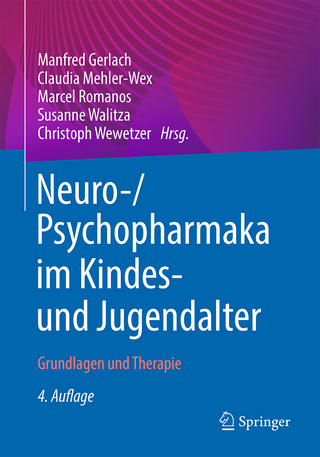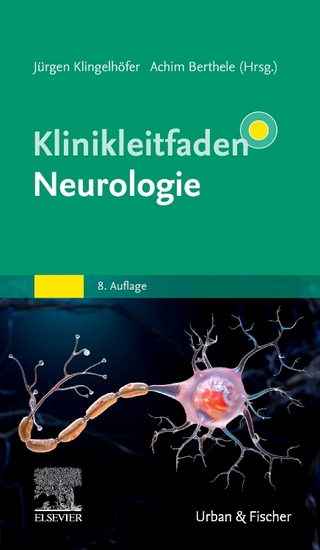
Neuropharmacology and Behavior
Kluwer Academic/Plenum Publishers (Verlag)
978-0-306-31056-0 (ISBN)
- Titel ist leider vergriffen;
keine Neuauflage - Artikel merken
1 * Amphetamine Psychosis-A Model for Paranoid Schizophrenia?.- 1. Introduction.- 1.1. LSD as a Drug Model.- 1.2. Amphetamine as a Drug Model.- 2. Clinical Description.- 2.1. Differences and Similarities.- 2.2. Experimental Induction.- 2.3. Metabolism.- 3. Speculation.- 3.1. Mechanism.- 3.2. Anatomical Substrate.- 3.3. Stress.- 3.4. Chronic-Acute Differences.- 3.5. Amine-Interaction Etiology.- 3.6. Other Conditions Associated with Paranoia.- 4. Conclusion.- 5. References.- 2 * Hypersensitive Serotonergic Receptors Involved in Clinical Depression-A Theory.- 1. Introduction.- 2. Two Serotonergic Models of Depression Based on Drug- Induced Atypical Behavior in Animals.- 2.1. A Tryptophan-5-Hydroxytryptophan Model.- 2.2. A Tetrabenazine Model.- 3. Selective Review of Clinical Studies Involving the Cerebral Serotonergic System and Depressive Illness in Man.- 4. A Theory Suggesting the Presence of Hypersensitive Serotonergic Synapses in Clinical Depression.- 5. Final Comments.- 6. References.- 3 * The Organization of Central Catecholamine Neuron Systems.- 1. Introduction.- 2. Dopamine Neuron Systems.- 2.1. Nigrostriatal System.- 2.2. Mesocortical System.- 2.3. Tubero-Hypophysial System.- 2.4. Incerto-Hypothalamic System.- 2.5. Retinal System.- 2.6. Periventricular System.- 3. Noradrenaline Systems.- 3.1. Locus Coeruleus System.- 3.2. Lateral Tegmental System.- 4. Adrenaline System.- 5. Conclusions.- 6. References.- 4 * Effect of Reserpine on Monoamine Synthesis and on Apparent Dopaminergic Receptor Sensitivity in Rat Brain.- 1. Introduction.- 2. Methods.- 3. Results.- 3.1. Dose Response.- 3.2. Time Course.- 3.3. Effect of Apomorphine after Pretreatment with Reserpine.- 4. Discussion.- 5. Summary.- 6. References.- 5 * The Induction of Tyrosine-3-monooxygenase in Rat Adrenal Medulla: A Model for the Transsynaptic Regulation of Gene Expression.- 1. Introduction.- 2. Measurements of TH Synthesis Rate in Rat Adrenal Medulla.- 3. Participation of 3?,5?-Adenosine Monophosphate in the Transsynaptic Regulation of Gene Expression in Rat Adrenal Medulla.- 4. Protein Kinase Activation and cAMP Content in Rat Adrenal Medulla.- 5. Inconsistency of the Experimental Evidence Supporting a Lack of Correlation Between an Early Increase in cAMP Content and the Delayed Transsynaptic Induction of Medullary TH.- 5.1. Experiments with Swimming Stress.- 5.2. Experiments with Reserpine and Propanolol.- 5.3. Experiments with Dexamethasone and Reserpine.- 5.4. Experiments with Reserpine: A Dose-Response Relationship.- 6. Activation and Translocation of Protein Kinase from Adrenal Medulla Cytosol During Transsynaptic Induction of TH.- 7. Protein Kinase Translocation in Explaining Results Purporting a Lack of Association Between Increase in cAMP and TH Induction.- 8. Nuclear Phosphorylation and Gene Expression: Role of Protein Kinase Translocation.- 9. Conclusions.- 10. References.- 6 * The Neurophysiological Effects of Diphenylhydantoin and Their Relationship to Anticonvulsant Activity.- 1. Introduction.- 2. Active Transport and Electrolyte Balance.- 2.1. Biochemical Studies.- 2.2. Ouabain Antagonism.- 2.3. Frog Skin Preparation.- 2.4. Neurophysiological Studies.- 3. Neurophysiological Studies.- 3.1. Invertebrate Preparation.- 3.2. Mammalian Preparations.- 4. Discussion and Conclusions.- 5. References.- 7 * Some Molecular Aspects of Neural Mechanisms.- 1. Introduction.- 2. Molecular Structure of Receptors for Transmitters.- 3. Molecular Structure of the Sodium Channel.- 4. Molecular Structure of Nucleohistone.- 4.1. Histone H4.- 4.2. Histone H3.- 4.3. Histone H2B.- 4.4. Histone H2A.- 5. Possible Structures for the Nucleosome.- 6. References.- 8 * Seven Neurons of Psychopharmacology: Adaptive Regulation in Biogenic Amine Neurons.- 1. Introduction.- 2. Seven Model Neurons.- 2.1. Model Neuron 1.- 2.2. Model Neuron 2.- 2.3. Model Neuron 3.- 2.4. Model Neuron 4.- 2.5. Model Neuron 5.- 2.6. Model Neuron 6.- 2.7. Model Neuron 7.- 3. Discussion and Speculation.- 4. References.- Epilogue.- Bibliography of Harold E. Himwich.
| Zusatzinfo | 19 black & white illustrations, biography |
|---|---|
| Sprache | englisch |
| Themenwelt | Medizin / Pharmazie ► Medizinische Fachgebiete ► Neurologie |
| Medizin / Pharmazie ► Medizinische Fachgebiete ► Pharmakologie / Pharmakotherapie | |
| Medizin / Pharmazie ► Medizinische Fachgebiete ► Schmerztherapie | |
| ISBN-10 | 0-306-31056-2 / 0306310562 |
| ISBN-13 | 978-0-306-31056-0 / 9780306310560 |
| Zustand | Neuware |
| Haben Sie eine Frage zum Produkt? |
aus dem Bereich


